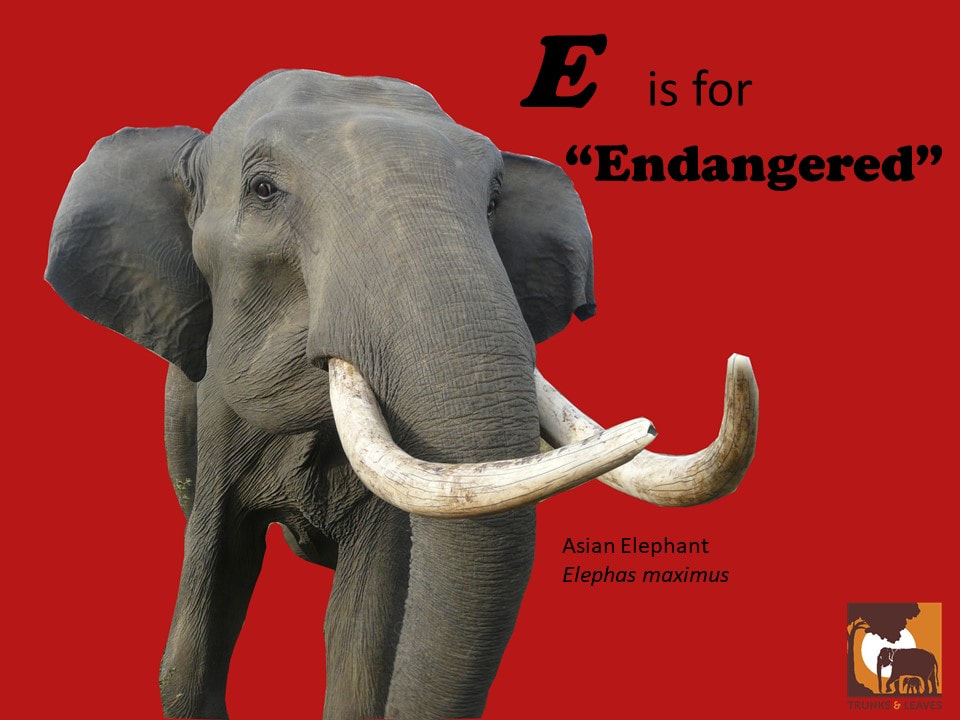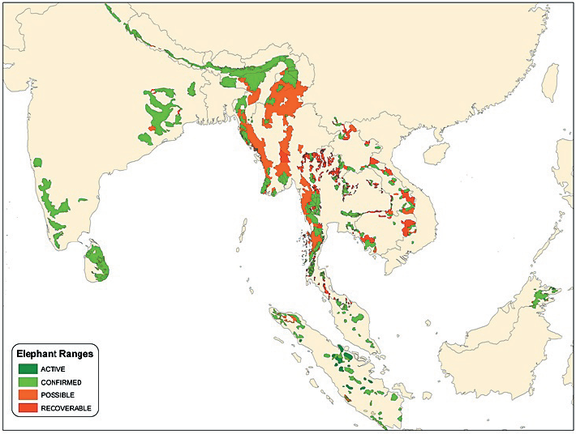|
The Asian elephant is listed as Endangered under the IUCN Red List because of a population size reduction inferred to be at least 50% over the last three generations, based on a reduction in its area of occupancy and the quality of its habitat. A recent estimate for the global population size of the Asian Elephant was 41,410–52,345 animals, but for many areas this is just a crude guess. In some countries such as Vietnam, populations may be down to double digits. Populations are far lower than that of African savannah elephants, which number over 350,000 or African forest elephants, for which there are no good estimates but are thought to number at least over 100,000. Sumatran elephants have been listed as critically endangered since 2012.
The number one threat to this species is habitat loss and fragmentation. Elephants in Asia may have lost as much as 60% of their range since the 1700s, during the colonial era. Remaining large populations live on landscapes heavily dominated by human activity. The major threat to elephants in South Asia are habitat loss, human-elephant conflict and accidents. In South East Asia elephants face both habitat loss and hunting pressure. When elephants are moved or removed as part of management efforts, it can also place a lot of stress on the affected individuals. Though today there are many efforts to try to breed elephants in captivity, they reproduce slowly and have such a low calf survival rate that it is unlikely captive breeding can be used to rescue dwindling wild populations. While capture from the wild is now illegal, the vast majority of elephants in captivity, even today, were captured from the wild - usually at a very young age. Or else are the offspring of captive females (e.g. working at timber camps) who mated with wild bulls. Because elephants reproduce so slowly, the capture of too many calves from the wild for labor, tourism or other purposes can in fact threaten the persistence of some wild populations.
While captive elephants can serve a valuable role in educating people - especially children - about elephants and their world, as well as provide unique research opportunities, ultimately it's important to remember that the future of elephants depends on securing the last remaining WILD populations.
|
Trunks & Leaves Inc. is a registered 501(c)3 nonprofit based in the United States.
Trunks & Leaves Inc.
82 Wendell Avenue, STE 100, Pittsfield MA 01201, USA
Trunks & Leaves Inc.
82 Wendell Avenue, STE 100, Pittsfield MA 01201, USA








